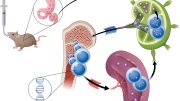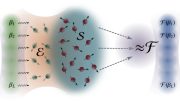
Using CDC data from 1999 to 2019, the study found that age-adjusted mortality rates decreased overall but widened significantly, particularly among white individuals aged 25 to 64 in rural areas, who experienced increased mortality rates.
Discrepancy driven primarily by an increase in death rates in middle-aged white people. Death rates among Black people remained highest overall, however, gap with those of white people halved.
Death rates from chronic conditions like lung disease and cardiovascular disease and so-called “diseases of despair” such as opioid overdoses are known to be higher in rural areas than in large cities, with differing economic, social and political circumstances influencing people’s access to care. To examine disparities in mortality rates for all causes of death, researchers from Brigham and Women’s Hospital used a Centers for Disease Control and Prevention (CDC) database to analyze all deaths occurring in the U.S. between 1999 and 2019. They found that age-adjusted mortality rates (AAMRs) declined in both rural and urban populations, but that the gap between the death rates dramatically widened as white individuals aged 25 to 64 in rural areas faced increasing AAMRs. The research findings are published in JAMA.
“One might think that with medical advancements over the course of two decades, differences in mortality rates became narrower, but what we’ve seen is quite the opposite,” said corresponding author Haider Warraich, MD, of the Brigham’s Heart and Vascular Center. “Instead, we saw an unprecedented reversal in the mortality rates of middle-aged white people, both men and women.”
Overall, there was a 12.1 percent increase in the AAMR for rural residents aged 25 to 64 years. While death rates fell among Black individuals, this group had greater AAMRs than all other racial/ethnic groups across both rural and urban environments. However, the difference in AAMR between Black and white individuals halved both overall in the U.S. and in rural areas. The authors note that the COVID-19 pandemic may have since exacerbated the urban-rural divides they observed in their study.
“Traditionally, researchers focusing on rural populations have highlighted the effect of the opioid epidemic and what have been called ‘diseases of despair,’ including alcohol abuse and suicide, but our previous work has shown that chronic conditions may also be driving this gap,” Warraich said. “Rural areas have a higher prevalence of risk factors for these conditions like smoking, poor diet, lack of exercise, and obesity. A parallel crisis is the record number of hospital closures in rural areas, which will make solving this problem even more difficult with limited accessibility to primary and emergency care.”
The researchers used the CDC’s Wide-Ranging Online Data for Epidemiologic Research database and the National Center for Health Statistics Urban-Rural Classification Scheme to conduct their analysis. Rural areas (less than 50,000 residents) and large metropolitan areas (one million or greater residents) were defined according to the 2013 U.S. Census. The authors note that one limitation to their analysis is that the rural population decreased from 16 to 14 percent of the U.S. between 1999 and 2019, although this would not account for their findings.
“We are seeing a public health crisis unfolding before our very eyes,” Warraich said. “This is a problem that affects a very large portion of our population, and we need to lend more attention to the drivers of this crisis, which mirrors a larger economic downturn that’s taken place in rural America.”
Reference: “Rural-Urban Disparity in Mortality in the US From 1999 to 2019” by Sarah H. Cross, PhD, MSW, MPH; Robert M. Califf, MD and Haider J. Warraich, MD, 8 June 2021, JAMA.
DOI:









Be the first to comment on "Gap in Death Rates Between Rural and Urban Areas Tripled During Past 20 Years"